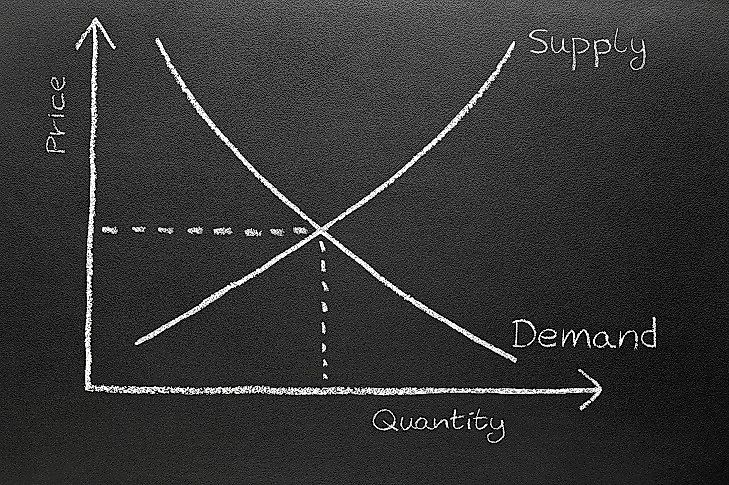What Is A Market Economy?

The relationship between supply and demand for goods and services lies at the core of a market economy, and dictate the prices of those goods and services. Supply refers to the goods and services and involves natural resources, human resources, and finances. Demand comes from the needs of consumers, governments, and private enterprises. In a market economy, competition influences production, distribution, and investment decisions. Under this system, a producer of goods will sell those products based on two things. These are the availability of the goods and services and the highest prices consumers are willing to pay for them. The same is true of work wages, employees try to sell their time at the highest possible rate. Most market economies exist under some level of government regulation, making them mixed market economies rather than free market economies.
Characteristics of a Market Economy
Market economies around the world share several key characteristics. The majority of goods and services are privately owned, for example. This means that business owners can sell their business for profit. Ownership is valuable in a market economy. People living in this type of economy can buy any product they desire as long as they are able to afford it. This requires money, which becomes the key to this type of society. In order to obtain money, individuals must sell something. In this case, selling their time to employers is the most common way to earn money. Goods are distributed to individuals with the most money. Self interest motivates action, suppliers sell at the highest possible price and consumers negotiate the lowest possible price. This self interest provides an accurate reflection of supply and demand, which helps control prices. Additionally, the focus of the suppliers in market economies is on increasing profit rather than ensuring that basic public needs are met.
Advantages
As with all economic frameworks, market economies have a number of advantages. One of the biggest advantages is that competition drives efficiency. This means that in order to be successful, producers must carefully examine their production processes, reduce costs, and reduce production time. In addition to being efficient, suppliers must also be creative and innovative to keep a competitive edge. This environment also leads to diversity of goods in the marketplace, which give the consumer more choices. These choices promote the idea of freedom of choice, although choice is dependent upon available money.
Disadvantages
One of the biggest disadvantages of market economies is their reliance on money as the primary measure and means of success. This creates a society of wealthy versus poor individuals. The gap between these two groups continues to widen because in this economy, it is easier for people with money to make more money, excluding people living in poverty from upward mobility. Because the focus is on making profit, suppliers aim to reduce production costs which can lead to environmental damage. It is often more expensive to produce goods in an environmentally sustainable way, therefore, government regulations are required. On the same note, working conditions can also be sub-par because health and safety costs suppliers more money, taking away from the profit. As previously mentioned, the main objective of market economies is profit, not meeting social needs. As a result, programs like Social Security, food assistance, medical assistance, and unemployment benefits tend to be smaller and rely on taxes for funding. This means that individuals with disadvantages are unable to compete in the market.











